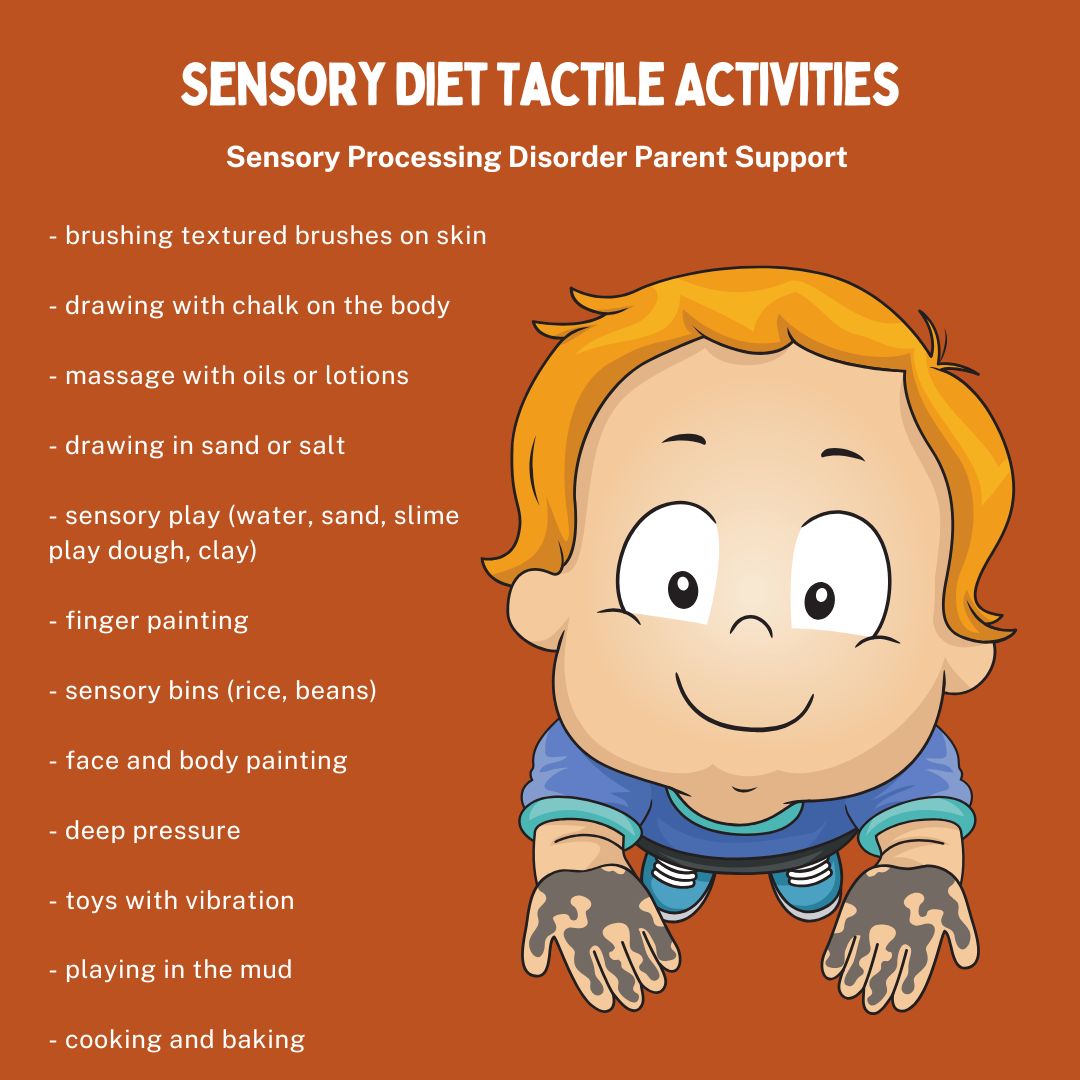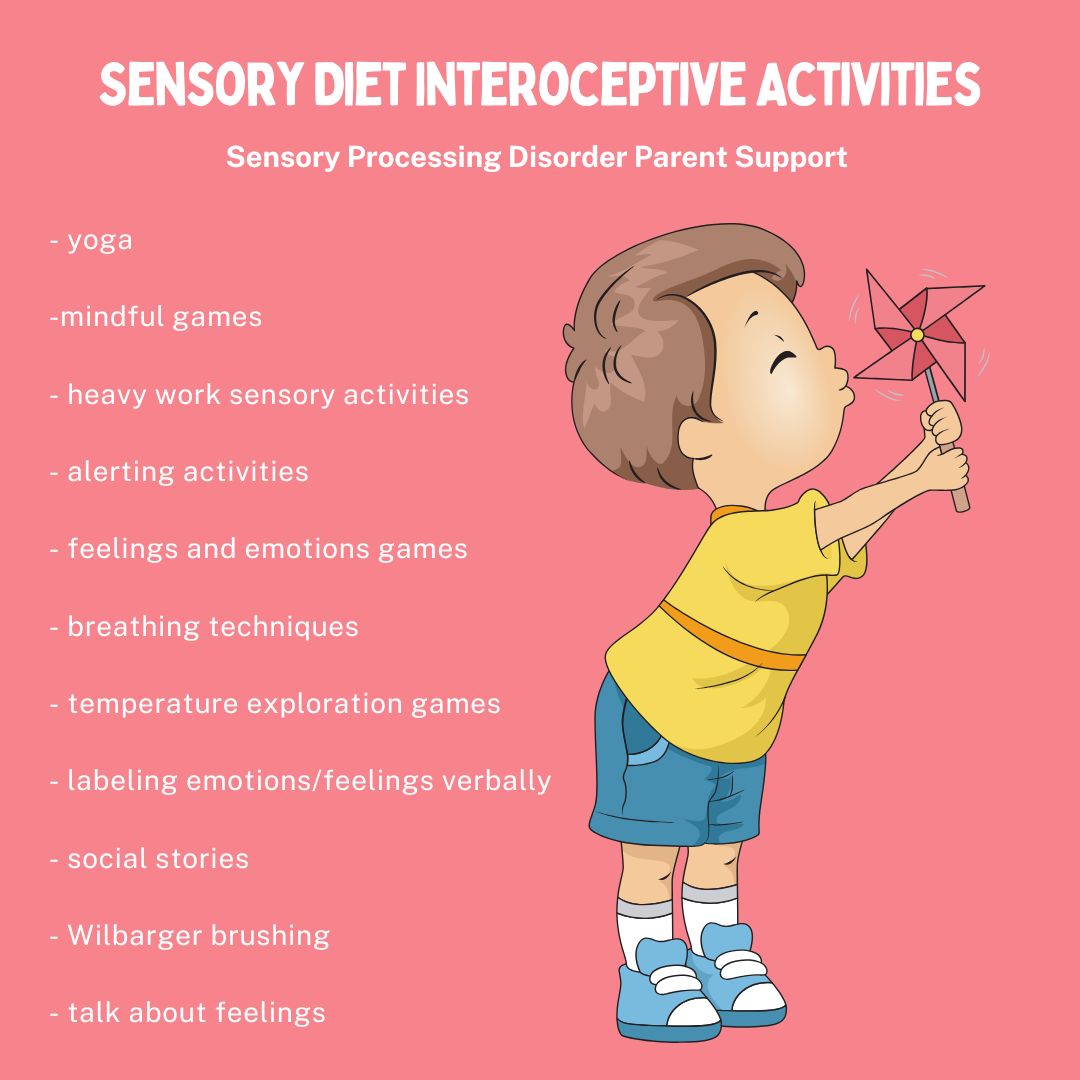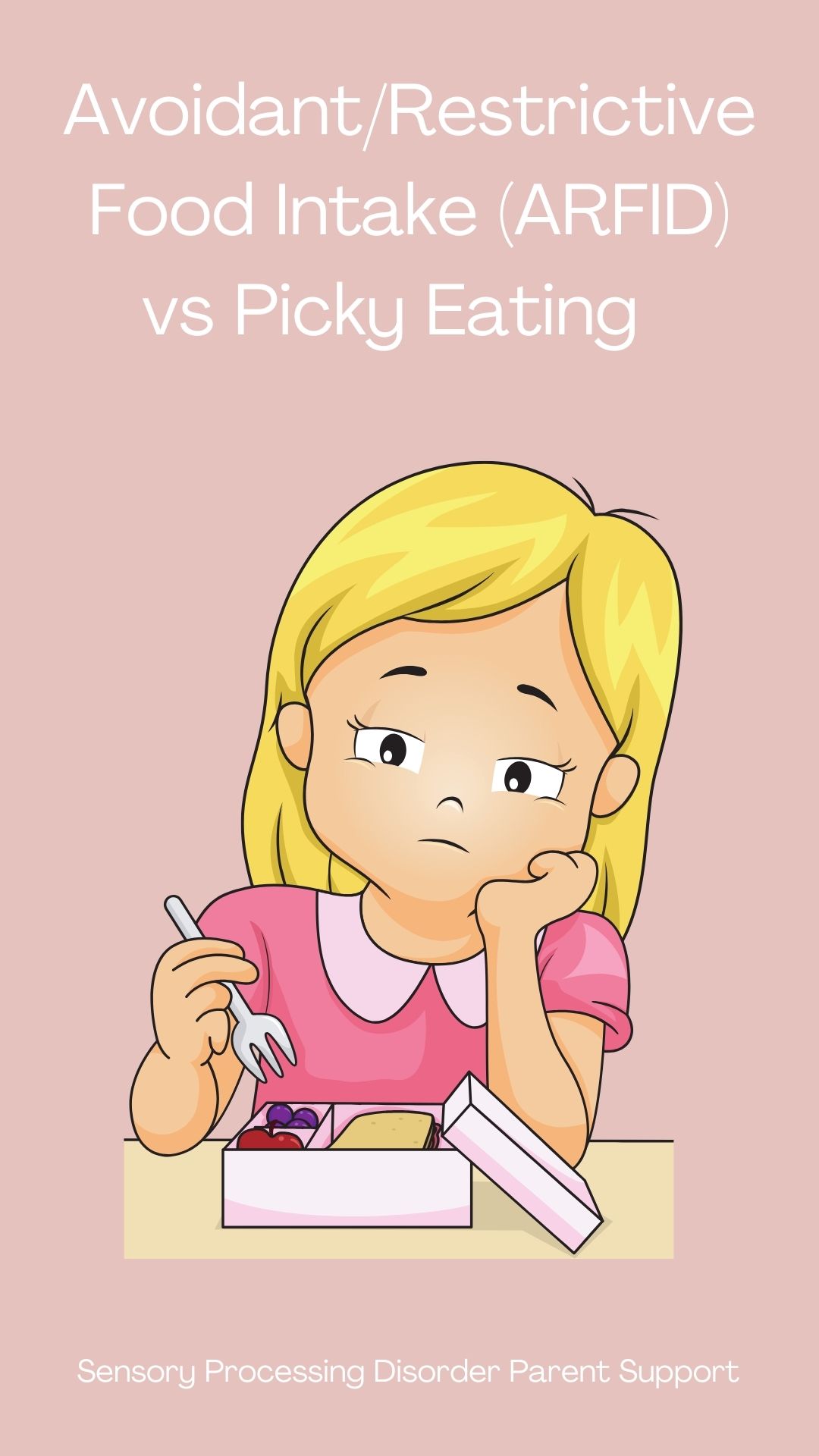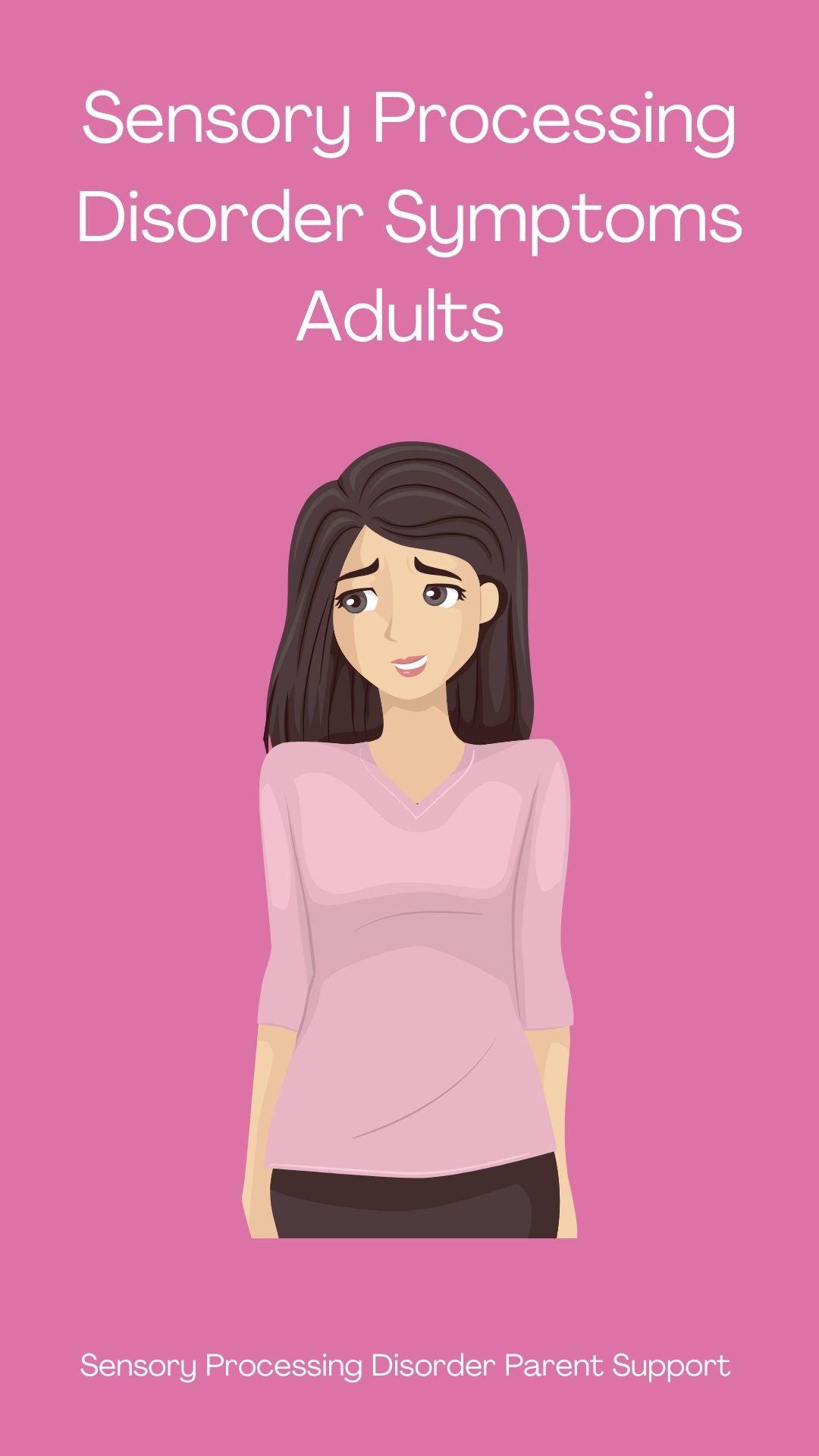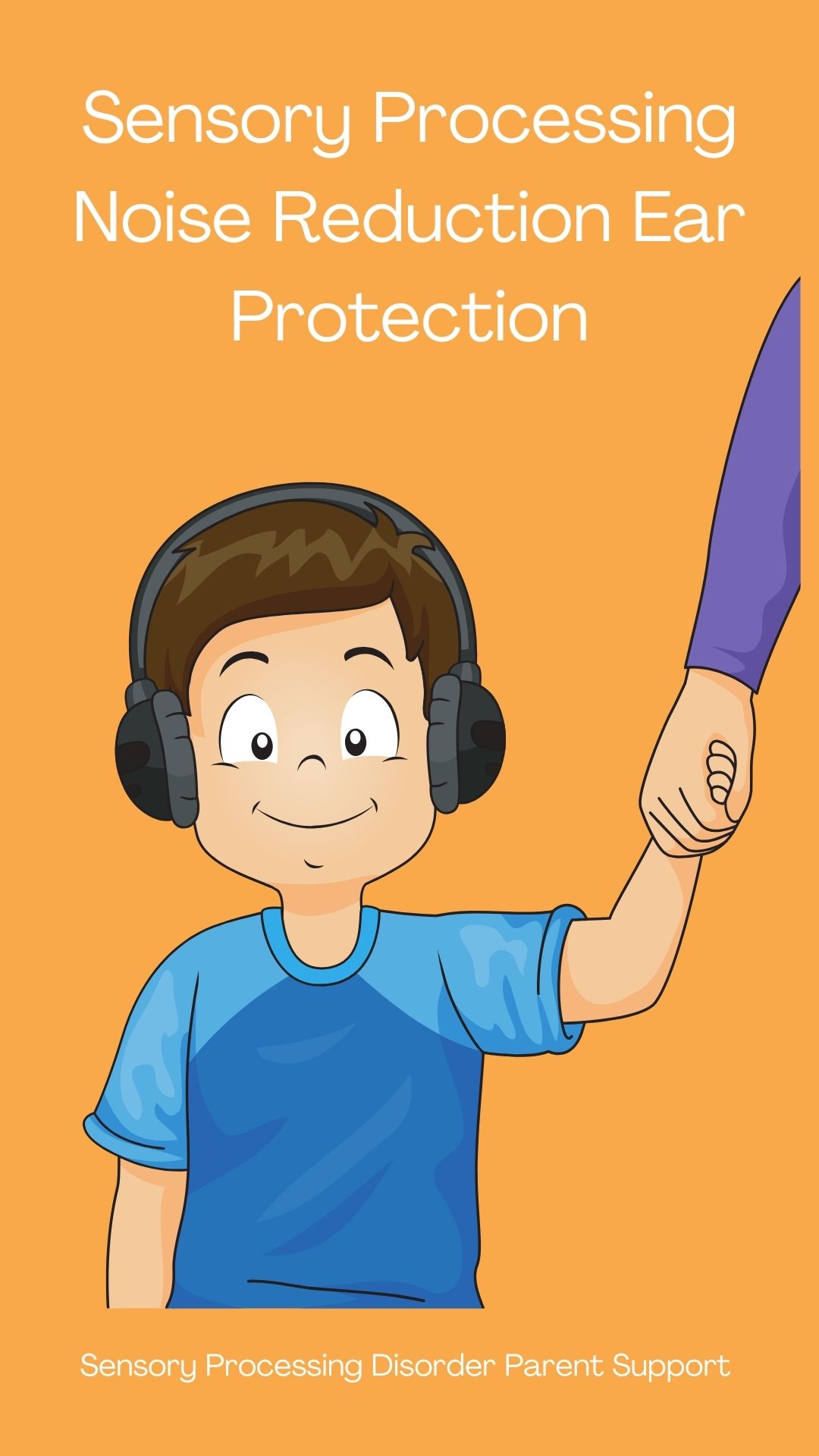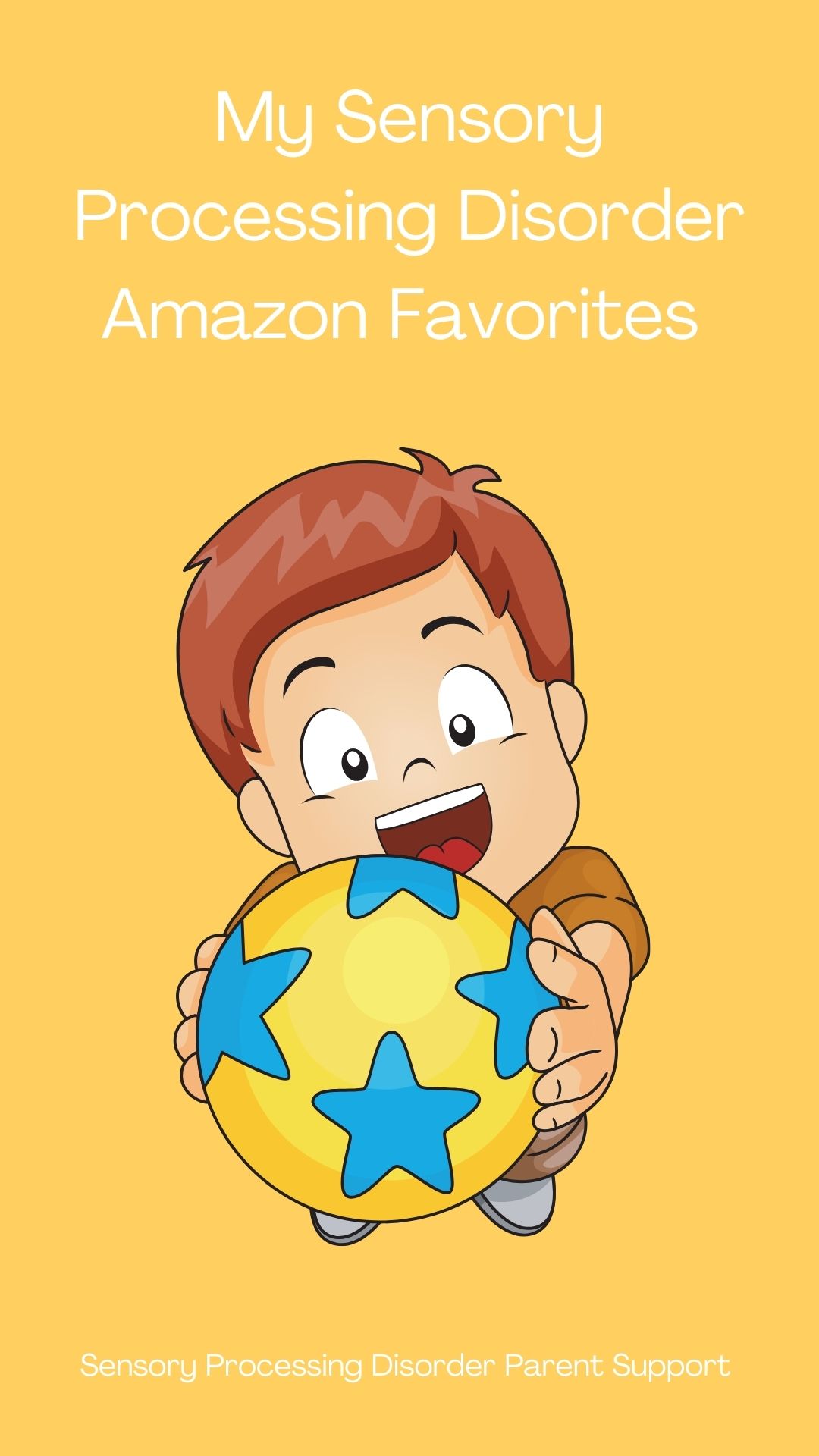
Sensory Processing Disorder Parent Support
Sensory Processing Disorder Sensory Diet Activities
Children with sensory differences ... painting the world beautiful.
Sensory Processing Disorder Sensory Diet Activities
Jeanette Loftus
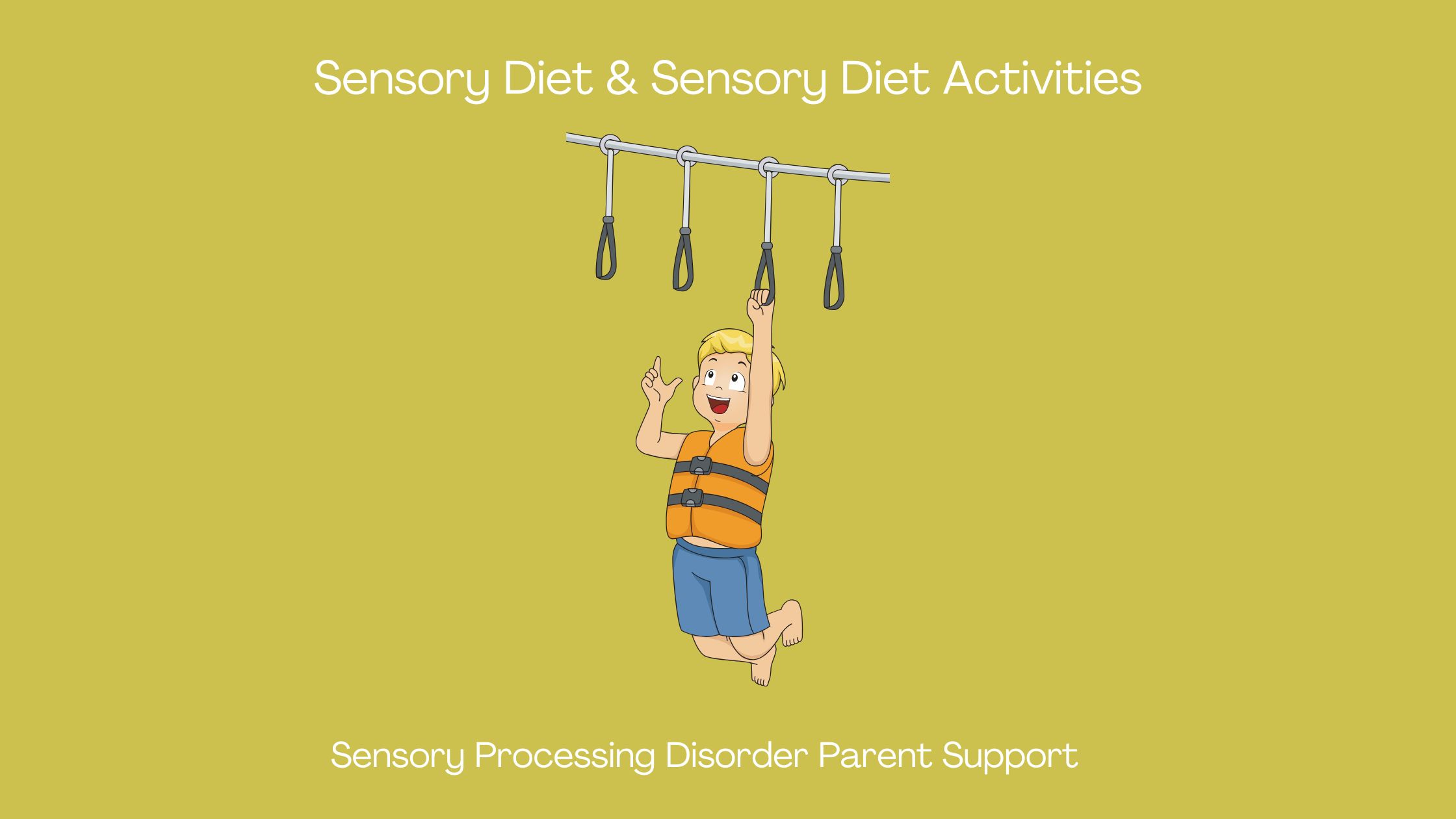
We receive sensory input through our senses. Most think we only have five senses but we have eight. Sight, hearing, touch, taste, smell, interoception, proprioception and vestibular are the eight human senses.
A sensory diet is a schedule that is planned daily of sensory activities that are just for your child's sensory needs. Just like a regular diet, a sensory diet is created to meet the sensory needs of each individual child.
A sensory diet includes a variety of different sensory activities that stimulate the senses and help children regulate their responses to the sensory input in their environments.
There are many different types of sensory activities that can be included in your child's routine each day that stimulate their eight senses.
Sensory bins are small bins filled with rice, beans, sand, or water that children can play in using their hands for a sensory tactile activity. This activity provides tactile input and can help with fine motor skills and hand-eye coordination.
Swinging in a sensory therapy swing is an excellent activity for providing vestibular input. It can help children regulate their balance, body awareness, and coordination.
Messy play activities like finger painting, playing with slime, or making mud pies can provide a range of sensory input and can be fun for children. This type of play can also help with sensory integration and regulation.
Heavy work sensory activities are pushing, pulling, or carrying heavy objects, which provide proprioceptive input. They can help children regulate their energy levels and improve their focus and attention.
Sensory walks involves taking a walk and incorporating different sensory experiences along the way. Children can feel different textures or listen to different sounds. This activity can help with sensory exploration and regulation.
There are so many benefits of sensory activities. They can help children regulate their emotions, improve their focus and strengthen motor skills. Sensory activities can also help children develop a better understanding of their own bodies and their responses to the sensory input they receive from their environments.
Sensory diet activities are different for everyone depending on their sensory needs because everyone has different sensory needs. Some children may require more frequent activities, while others may only need them a few times a week. It is very important to work with your child's occupational therapist to determine the appropriate amount and types of sensory activities for each child.
Sensory diet activities are important for children because they can help them cope with everyday sensory challenges. Children with sensory processing disorder may struggle with different daily sensory activities such as eating or getting dressed. A planned sensory diet can help children regulate their sensory responses and make these activities easier for them.
Sensory input is so important for a child's development. When sensory activities are included into a child's daily sensory diet it can provide children with the sensory input t hat they need to help them regulate their responses and improve their functioning.
Sensory Diet Olfactory Activities
- play with scented play dough
- scratch and sniff scented stickers
- wear essential oil diffuser necklace
- make sensory scented bottles
- chew scented bubble gum
- play with scented fidget toys
- guess the scent game
- play with scented rice sensory bin
- write with scented pens
- blow scented bubbles
- bake and cook
- use scented sensory paints
- use scented markers
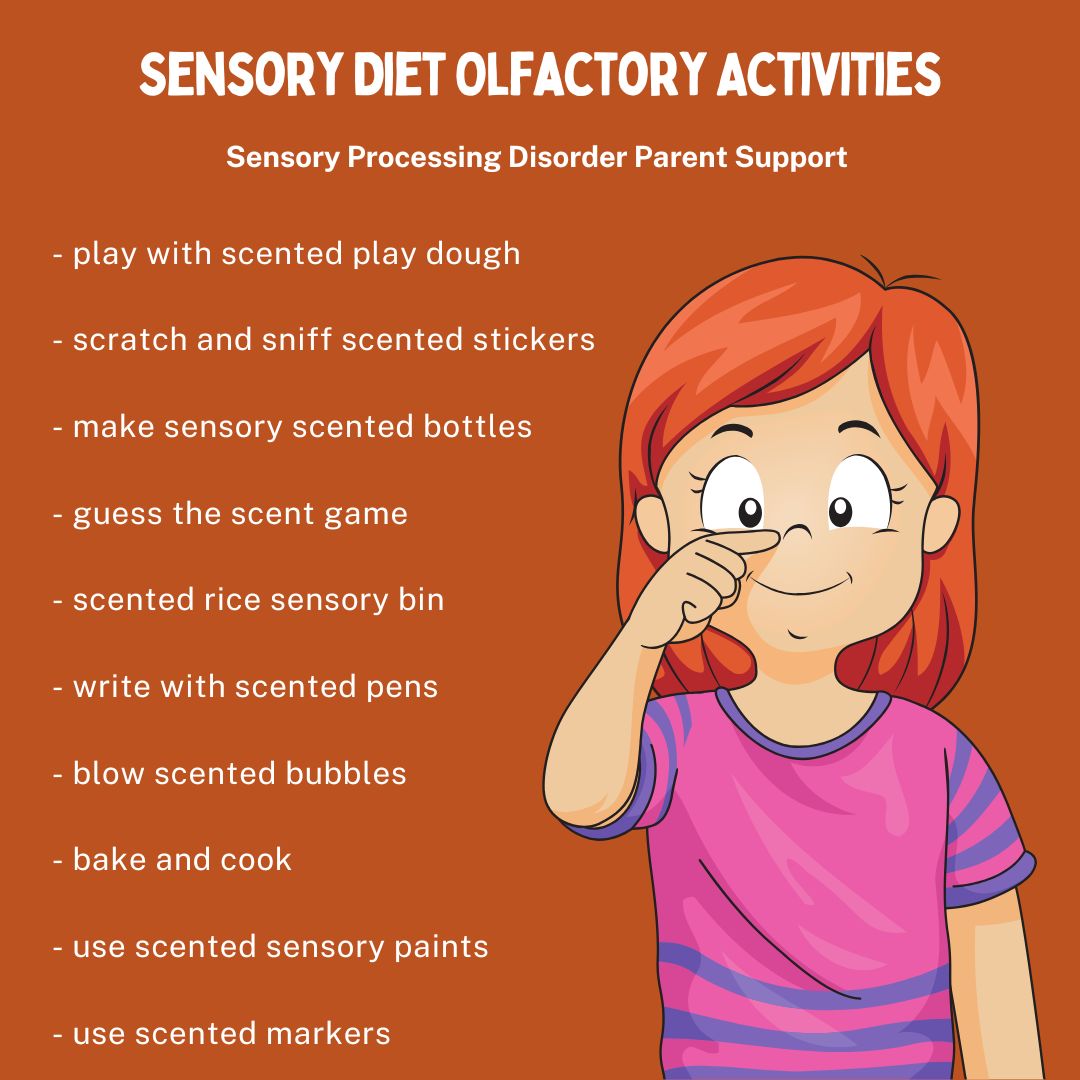
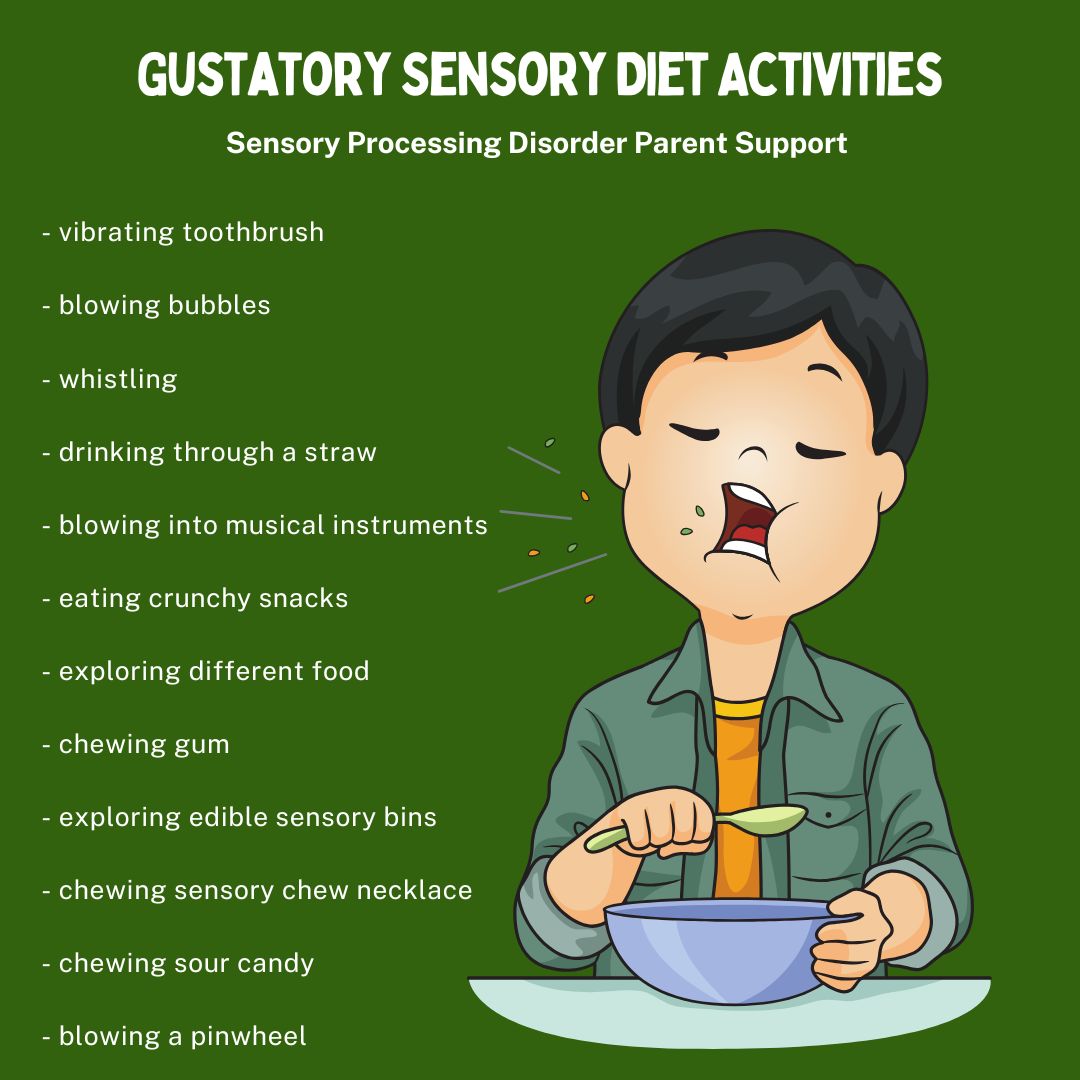
Gustatory Sensory Diet Activities
- vibrating toothbrush
- blowing bubbles
- whistling
- drinking through a straw
- blowing through musical instruments
- eating crunchy snacks
- blowing up balloons
- exploring food temperatures, tastes and textures
- chewing gum
- exploring edible sensory bins
- chewing sensory chew necklace
- chewing sour candy
- blowing a pinwheel
Sensory Diet Visual Activities
- sensory bottles
- color matching games
- light table activities
- visual schedules
- marble mazes
- light up toys
- spinning toys
- kaleidoscopes
- catching a ball
- I spy games
- bean bag toss
- stringing beads
- liquid motion toys
- drawing pictures
- dot to dot worksheets
- water play
- shadow puppets
- bubbles
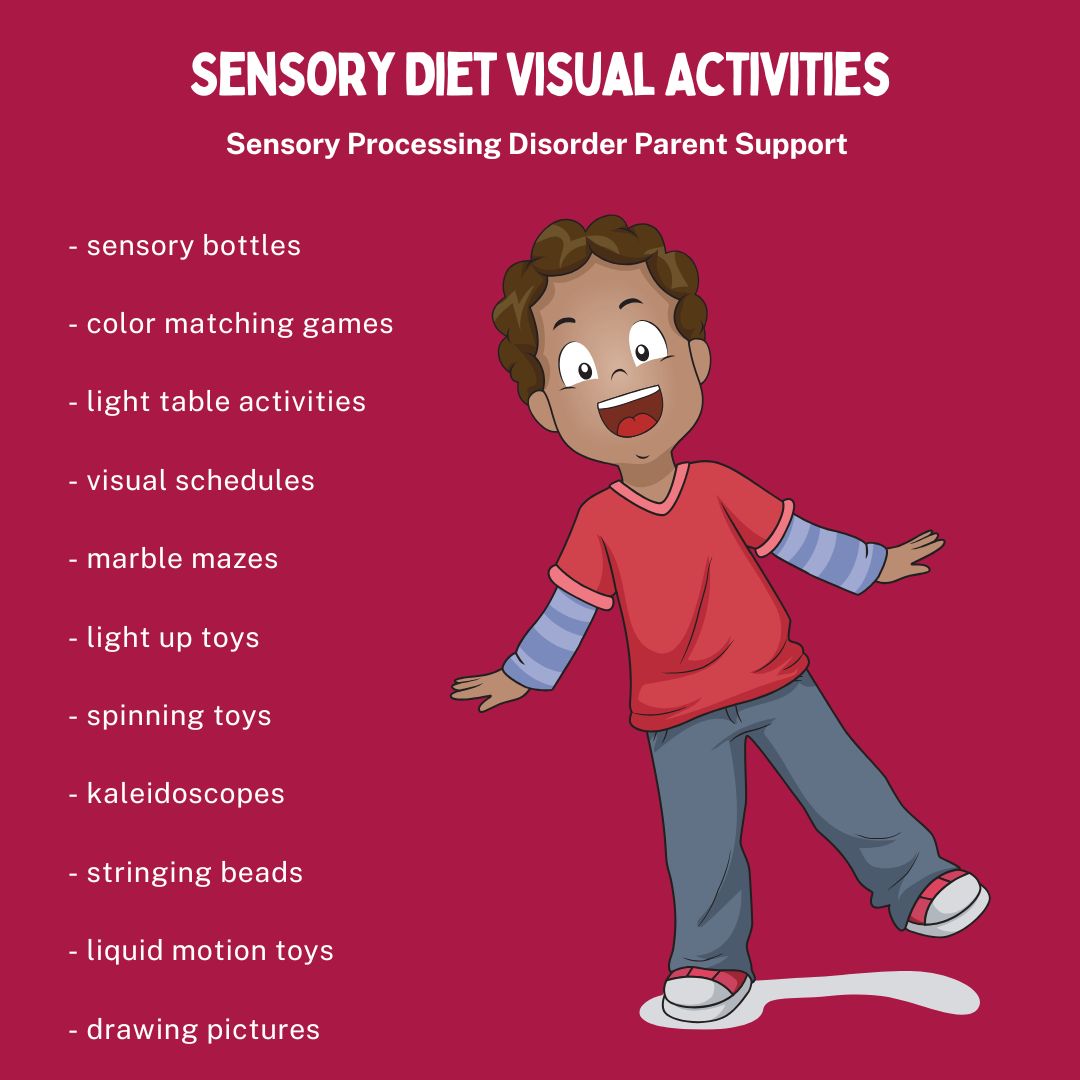
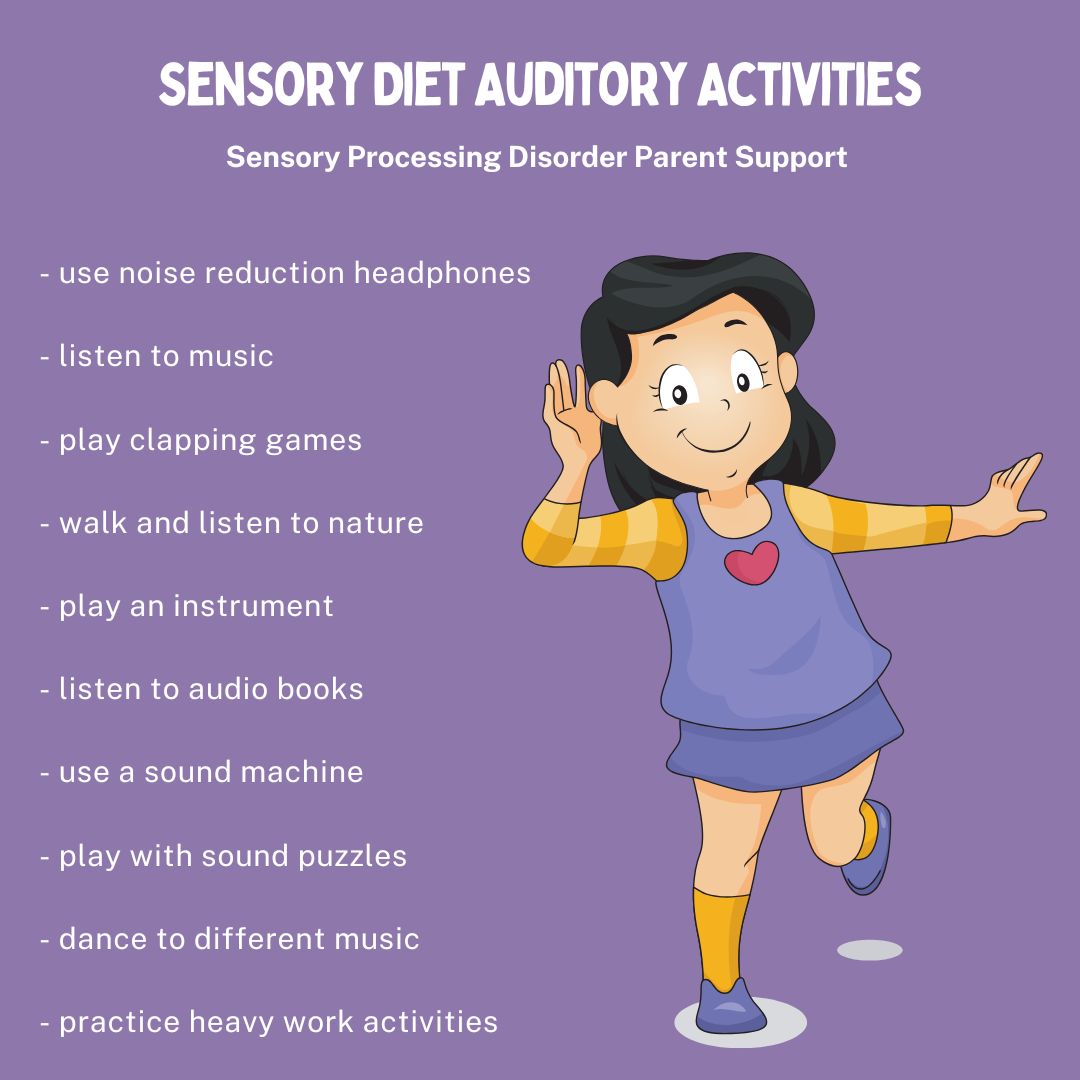
Sensory Diet Auditory Activities
- use noise reduction headphones
- listen to music
- play clapping games
- walk and listen to nature
- play an instrument
- listen to audio books
- use a sound machine
- shake a rice sensory bottle
- sing in a microphone
- play matching sound games
- play speaking and listening games
- storytelling
- play with sound puzzles
- dance to different music
- play telephone games
- practice heavy work activities
Sensory Diet Proprioceptive Activities
- rough and tumble play or play wrestling
- tug of war with rope or fabric
- crawling through tunnels and boxes
- pulling or pushing a cart or wagon
- catching and throwing a weighted ball
- wheelbarrow walking
- scooter board activities
- squishing between pillows
- squeezing stress balls
- joint compressions
- exercise (push ups, yoga, sit ups)
- rolling out play dough
- hanging from trapeze
- pulling apart resistant toys or objects
- gross motor activities
(obstacle courses or stretching)
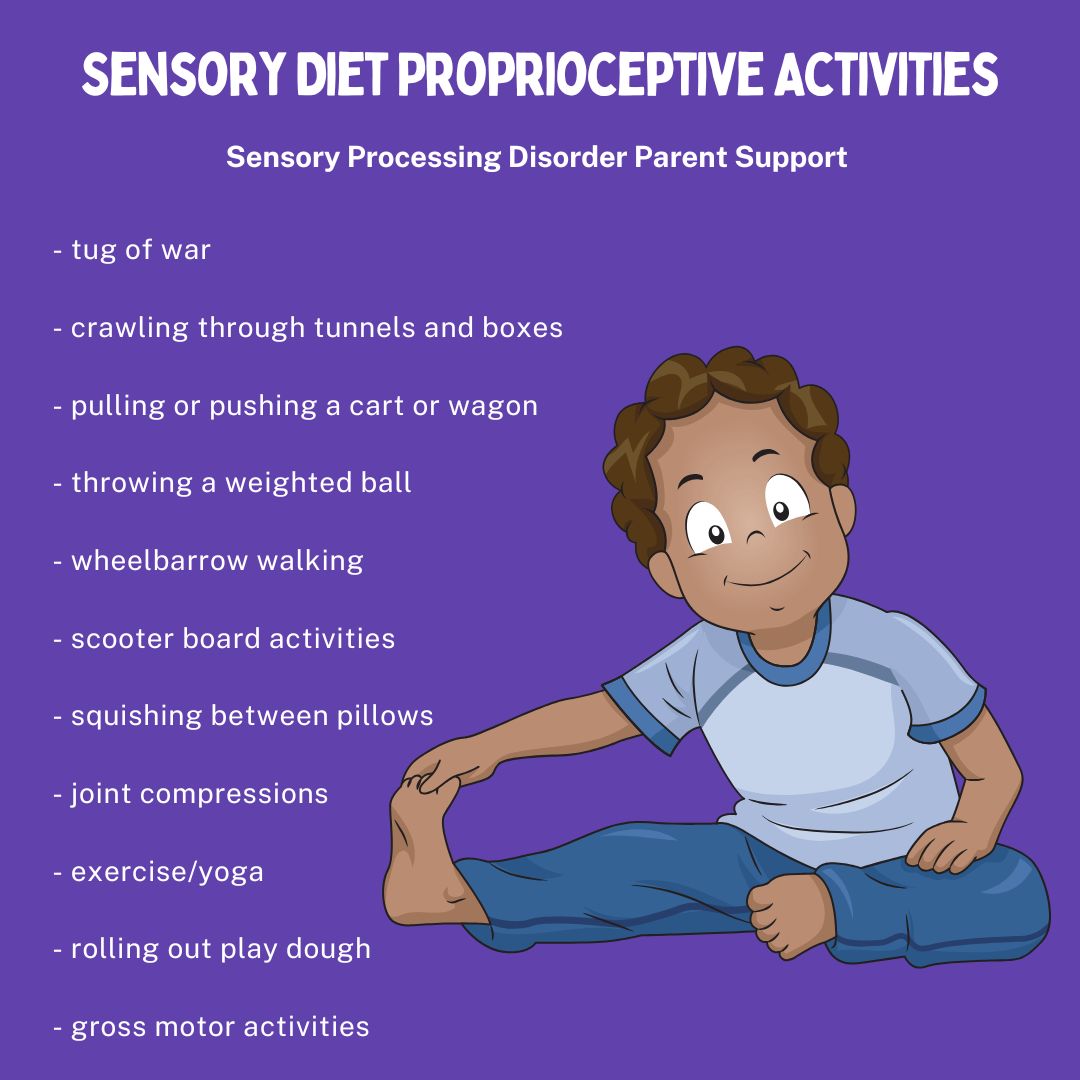
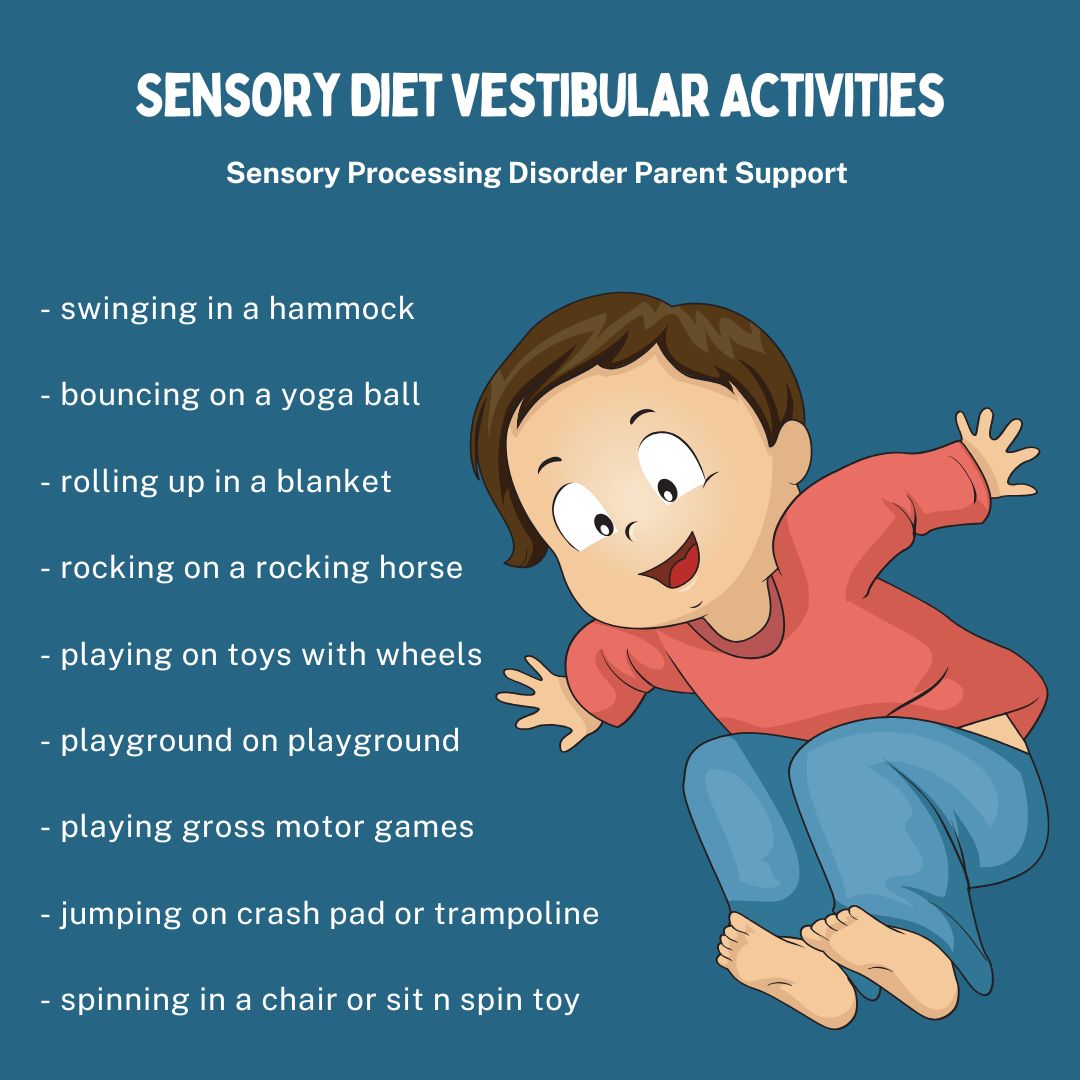
Sensory Diet Vestibular Activities
- swinging in a hammock
- jumping on crash pad or trampoline
- bouncing on a yoga ball or teeter totter
- rolling up in a blanket
- spinning in a chair or sit n spin toy
- rocking on a rocking horse
- hanging upside down off couch, from monkey bars or from trapeze bars
- playing on toys with wheels
(roller blades, wagons, trikes or scooters)
- playground on playground equipment (slides, teeter totter, merry-go-round)
- playing gross motor games
(soccer, basketball, tag or hopscotch
Sensory Diet Tactile Activities
- brushing different textured brushes over the skin
- drawing with chalk on the body
- massage with oils, lotions and powders
- rubbing different fabric textures against the skin
- drawing in sand or salt
- sensory play (water, sand, slime play dough, clay)
- finger painting
- sensory bins (rice, beans)
- face and body painting
- bubble bath and swimming
- body tattoos or stickers on the body
- deep pressure
- gardening and plating flowers
- toys with vibration
- playing in the mud
- cooking and baking
